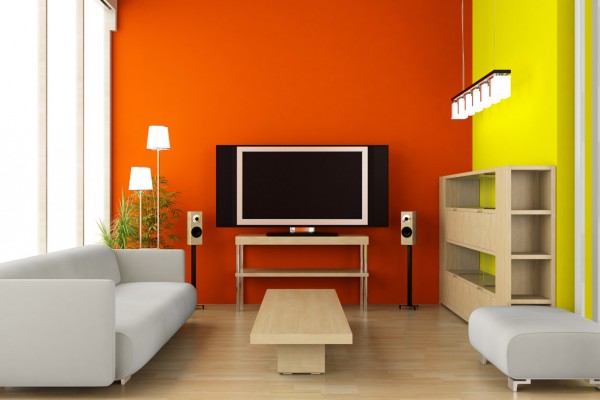Interior painting needs careful preparation, perhaps even more than exterior painting. It affects the inside of our house and when done improperly, it is possible to ruin our furniture and other objects. In fact, a good interior painting require as much as effort in planning compared to the actual painting task. As an example, we may need to open the windows and remove or cover objects inside the house. If we don’t prepare properly, it is possible that we need to deal with additional jobs, such as cleaning affected furniture.
There are many things to consider, as an example we may need to give the surface a coat of primer/sealer. We also need to choose different shades before applying the paint. The primed surface may also require a high-gloss, semi-gloss or flat finish. We can use texture wall paints on any plaster surface and the coat is usually more economic on textured decorations. This should be a good idea if we want to avoid the monotony of ordinary flat paint.
Texture wall paints are also able to cover patches and cracks in the plaster better than typical ordinary wall paint. However, texture wall paint may collect dust more easily and restoring it to smoother finish can be rather difficult. Because these paints are thicker than typical wall paints, we could apply them to wallboard as well. Texture that can be produced by the paint includes multi-color, mission, Spanish and random.
As long as ordinary precautions are observed, we shouldn’t find difficulties when painting composition wallboard. However, we need to make sure that the surface is free from oil and grease. The wallboard painting procedure is generally similar with plaster. We need sealing coat and primer, followed by proper finishing coats. In general, we could use resin-emulsion or one-coat flat type paint.
We can apply water-thinned paint to the wallpaper as long as it’s properly bonded to the well. The wallpaper shouldn’t also contain dyes that can bleed into the water-based paint. Thicker wallpaper is preferable when we want to apply paint. This is a good thing to do if the wallpaper is difficult to remove without damaging the plaster.
The wood trim and interior walls should be smoothed properly with sandpaper and we may need to dust it before varnishing or painting. Ceilings and interior masonry walls can be handled like plaster surface. In this case, we should make sure that the masonry will dry properly before we apply the paint. Close attention should given when we preparing the surface. Some walls may contain Portland cement, so it is necessary to determine the effects of alkali.
In this case, we may need to use alkali-resistant primers, including rubber-based paints, especially if we want to use oil-based paints as follow up. Water-based paints can be used on plain cement walls for basements which are usually more susceptible to leakage and dampness. For concrete floors, we can use rubber-base paint and varnish, each has its own advantages and limitations.
About: RV is a local seo services professional and has been helping many small businesses since 8 years.



